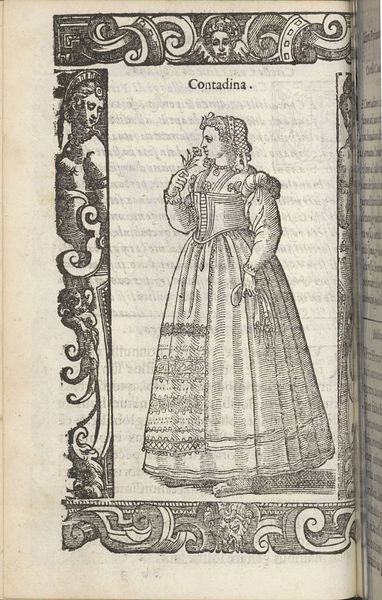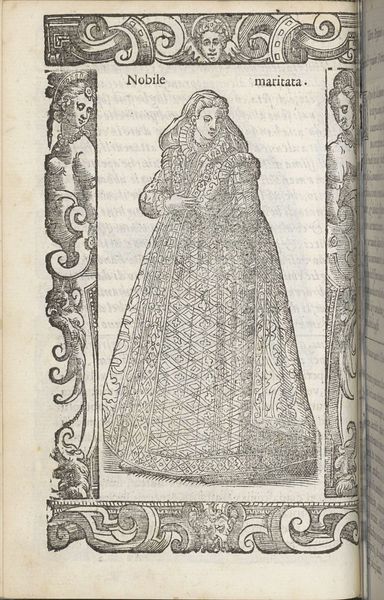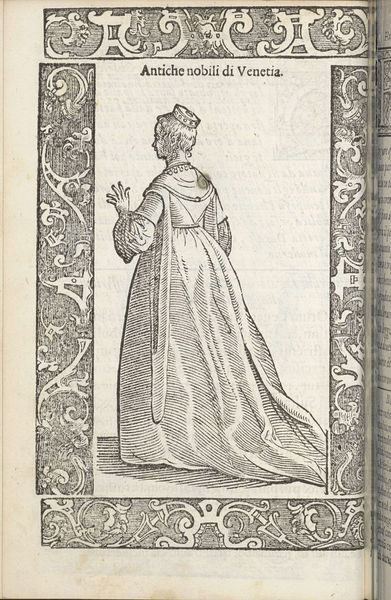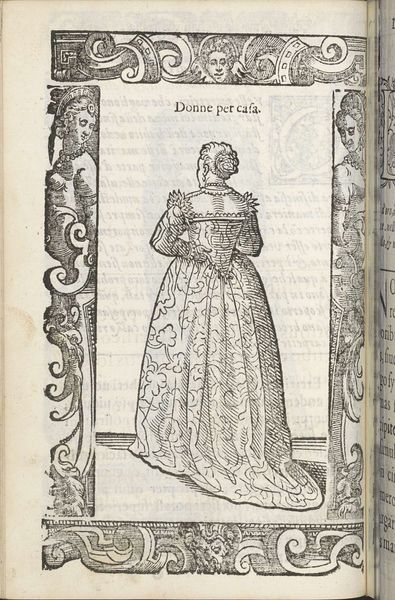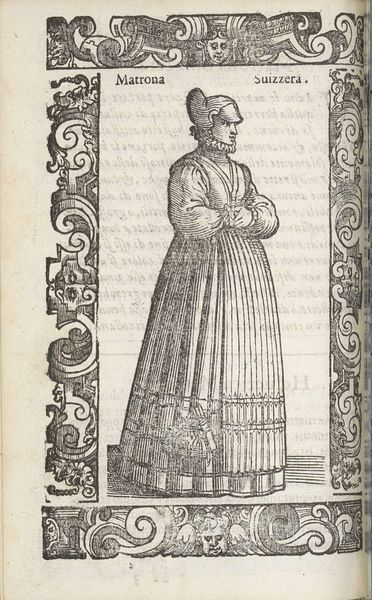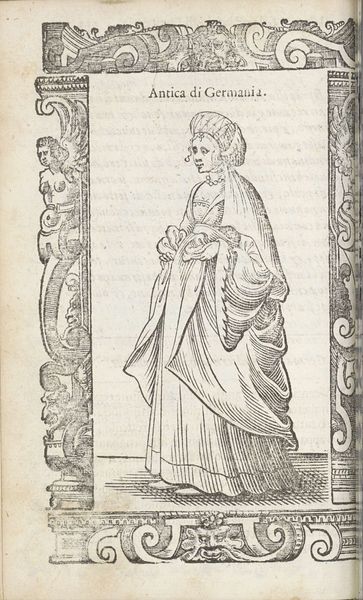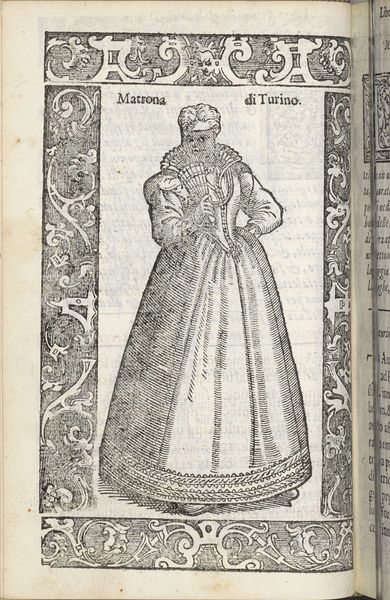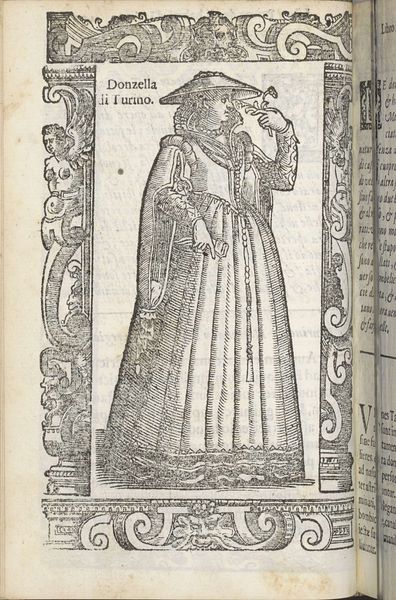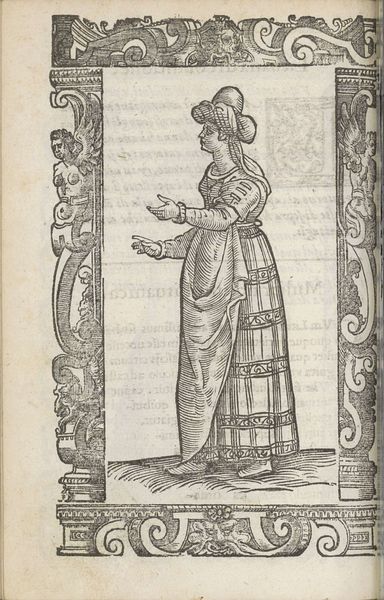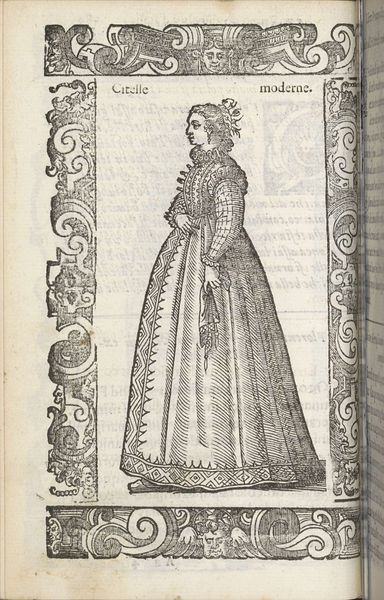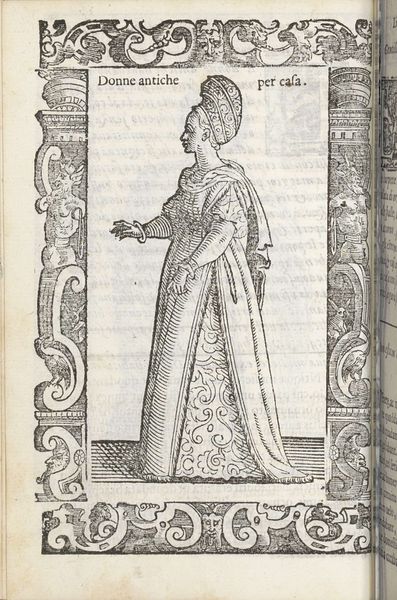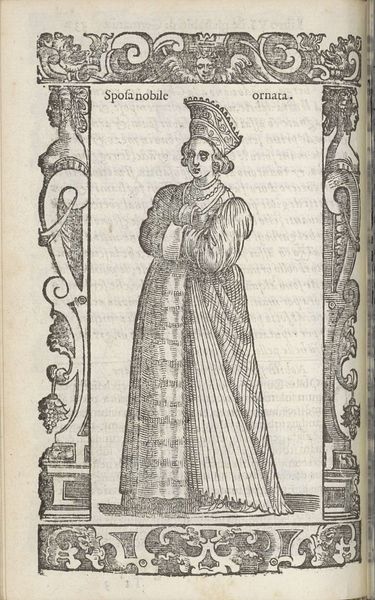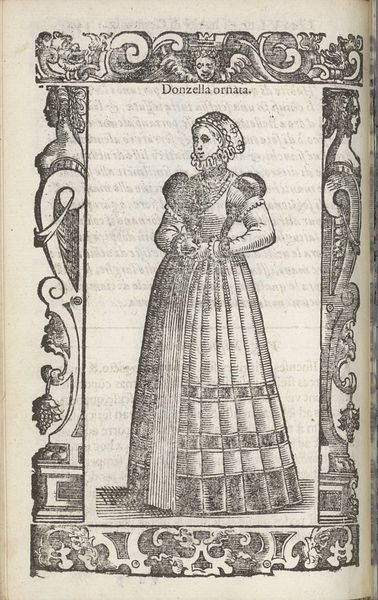
print, engraving
#
portrait
# print
#
mannerism
#
figuration
#
line
#
history-painting
#
italian-renaissance
#
engraving
Dimensions: height 167 mm, width 125 mm
Copyright: Rijks Museum: Open Domain
Editor: Here we have "Antiche di cent’anni" by Christoph Krieger, an engraving from 1598. I'm struck by how the woman's dress, rendered with such intricate lines, completely dominates the composition. What can you tell me about its historical context? Curator: Well, this engraving reflects a period of fascination with history, especially within courtly circles. Krieger's choice to depict what is explicitly described as "old" styles is significant. It speaks to an engagement with the past, but more importantly, to how elite fashion was used to convey power and prestige. Notice how the framing emphasizes the artifice, literally placing her within a constructed past. Editor: So, it's not necessarily about historical accuracy, but more about using history to make a statement? Curator: Exactly. These "ancient" fashions become tools for constructing identity. Think about who would have commissioned or viewed this print. The act of acquiring knowledge and displays of "historical" styles affirmed their status and knowledge, placing them within a continuum of cultural legacy. What do you make of the starkness of the lines, the almost diagrammatic quality of the image? Editor: It's like it's trying to archive or codify something... almost like an early fashion plate! Curator: Precisely! This print exists at the intersection of art, social commentary, and early forms of visual record-keeping. These are "centuries-old" clothes displayed at a remove; not simply replicated for posterity, but transformed into commodities through a very specific social lens. Editor: I hadn’t considered how deeply enmeshed art and social status were at that time. That perspective really transforms how I see the work. Curator: It is always interesting to investigate what function this artwork had at the moment and within which socio-economic forces it became an artwork and part of our visual culture.
Comments
No comments
Be the first to comment and join the conversation on the ultimate creative platform.
